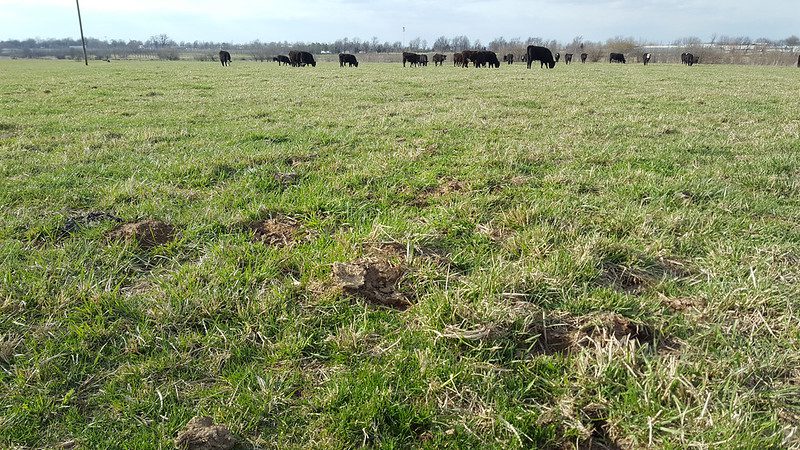By Ryan McGeeney
U of A System Division of Agriculture
Stockpiling bermudagrass or fescue for fall and winter grazing is one of the most reliable forage practices available for extending the grazing season. Farm demonstrations have consistently shown positive savings when comparing cost and yield of stockpiled forage versus harvesting and feeding hay.
But, as with many things, timing is everything.
John Jennings, professor and extension forage specialist for the University of Arkansas System Division of Agriculture, said many ranchers and pasture managers have arrived at the notion that early August is just too hot to apply nitrogen fertilizer.
“They have been told for years that most of the nitrogen from urea fertilizer will be lost due to volatilization when applied during hot weather,” Jennings said. “I have heard co-op managers tell this to customers, and other forage specialists have stated the same thing.
“But, based on actual research, that is simply not true,” he said.
Urea is a viable source of nitrogen fertilizer if ammonium nitrate is not available. Arkansas research trials on bermudagrass have shown yield differences between those nitrogen sources ranged from zero to 15 percent, with a majority of the studies showing less than a 10 percent difference, Jennings said.
“So, if urea is the primary nitrogen source carried by local dealers, use it,” he said. He said that if a grower is concerned about a 10 percent yield difference, he or she should simply add 5 to 6 pounds per acre more nitrogen to cover it.
“Timing is very important to produce a good fall bermudagrass stockpile,” Jennings said.
Arkansas research on stockpiling bermudagrass has shown that at research plots at Batesville and Fayetteville, delaying nitrogen application from Aug. 1 to Sept. 1 reduced forage dry matter yield as much as 60-80 percent.
“In south Arkansas, that date could be moved from Aug. 1 to Aug. 15,” Jennings said. “Each day closer to September reduces warm-season grass yield potential and viability of making fertilizer applications economical.”
The timing for fertilizing stockpiled fescue is the last week of August to the first week of September.
“Our research showed that early September is the optimum time to apply nitrogen fertilizer,” Jennings said. “Waiting until early to mid-October produced no more dry matter yield than the unfertilized control.
“If producers need fall forage, fertilizing for stockpiled forage is a good option, but timing is important,” he said.
Other options for fall forage include planting pearl millet or browntop millet the last of August. Browntop millet has a very fast growth cycle and can provide grazing in 30 days. Planting oats or brassicas in early September also works well for grazing in November and December. Ryegrass is a poor fall forage producer but can be mixed with winter or summer annual forages to produce grazing later in spring.
To learn more about extension programs in Arkansas, contact your local Cooperative Extension Service agent or visit uaex.uada.edu. Follow us on Twitter at @AR_Extension. Follow us on Twitter and Instagram at @AR_Extension. To learn more about Division of Agriculture research, visit the Arkansas Agricultural Experiment Station website: https://aaes.uark.edu. Follow on Twitter at @ArkAgResearch. To learn more about the Division of Agriculture, visit https://uada.edu/. Follow us on Twitter at @AgInArk.
About the Division of Agriculture
The University of Arkansas System Division of Agriculture’s mission is to strengthen agriculture, communities, and families by connecting trusted research to the adoption of best practices. Through the Agricultural Experiment Station and the Cooperative Extension Service, the Division of Agriculture conducts research and extension work within the nation’s historic land grant education system.
The Division of Agriculture is one of 20 entities within the University of Arkansas System. It has offices in all 75 counties in Arkansas and faculty on five system campuses.
The University of Arkansas System Division of Agriculture offers all its Extension and Research programs to all eligible persons without regard to race, color, sex, gender identity, sexual orientation, national origin, religion, age, disability, marital or veteran status, genetic information, or any other legally protected status, and is an Affirmative Action/Equal Opportunity Employer.







